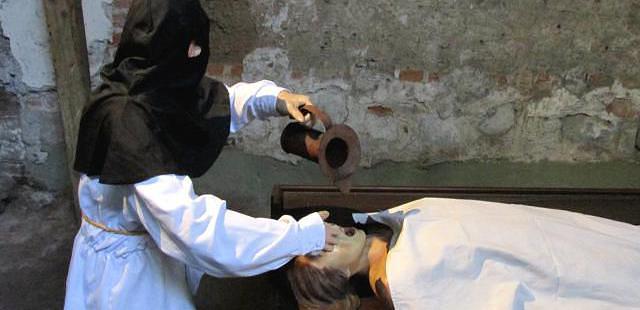,url-https%3A%2F%2Fwww.tripexpert.com%2Fimages%2Fmarker-fade%402x.png(-77.02281,-12.154729)/-77.02451515942812,-12.101489728705923,10.084386404102098/1280x214@2x?access_token=pk.eyJ1IjoidHJpcGV4cGVydHdlYiIsImEiOiJja2Fud3l2MDcwbXZ0MndyeGF3eGI3ZWhzIn0.zLqNa1RECyZZadF8zfQM5w)
Museum of the Inquisition vs Museo Pedro de Osma
Both Museo Pedro de Osma and Museum of the Inquisition are highly recommended by writers. On balance, Museo Pedro de Osma scores significantly higher than Museum of the Inquisition. Museo Pedro de Osma has a TripExpert Score of 87 with praise from 4 sources like Frommer's, Lonely Planet and Fodor's.
Museum of the Inquisition
 Frommer's
Frommer's
 Lonely Planet
Lonely Planet
 Afar Magazine
Afar Magazine
 Michelin Guide
Michelin Guide
Jr. Junin 548, Lima, Peru
From $0 /night
"A museum that soberly addresses religious intolerance from the Middle Ages through colonial times."
Full review
"A graceful neoclassical structure facing the Plaza Bolívar houses this diminutive museum, where the Spanish Inquisition once plied its trade."
Full review
"The displays are both cartoonishly dark and humorous."
Full review
3 Stars
"It was here that Lima's Holy Inquisition sat from 1584 to the late 18C."
Full review
Museo Pedro de Osma
 Fodor's
Fodor's
 Lonely Planet
Lonely Planet
 Travel + Leisure
Travel + Leisure
 Michelin Guide
Michelin Guide
 Frommer's
Frommer's
Av. Pedro de Osma 423, Lima, Peru
From $0 /night
"Even if there were no art inside this museum, it would still be worth the trip to see the century-old mansion that houses it."
Full review
i
Make sure to explore the manicured grounds.
Top Choice
"In a lovely beaux-arts mansion surrounded by gardens, this undervisited museum has an exquisite collection of colonial furniture, silverwork and art."
Full review
"The magnificent recently restored mansion... is yet another place to see a rich variety of art and artifacts."
Full review
2 Stars
"Pedro de Osma Museum is a fabulous museum devoted to colonial art with paintings from the 16C to the 19C, a wide variety of sculpture (wood, stone and marble), furniture, fabric and engravings."
Full review
"This stately Barranco museum began as the private collection of Don Pedro de Osma Gildemeister, who explored Peru gathering art objects from the 16th to 19th centuries"
Full review




